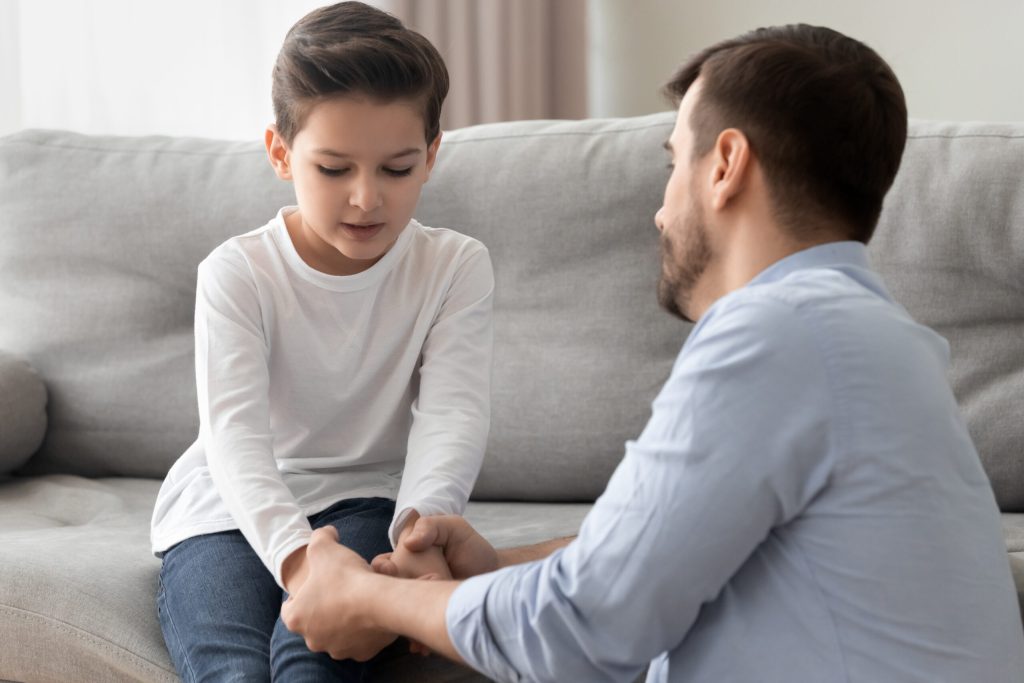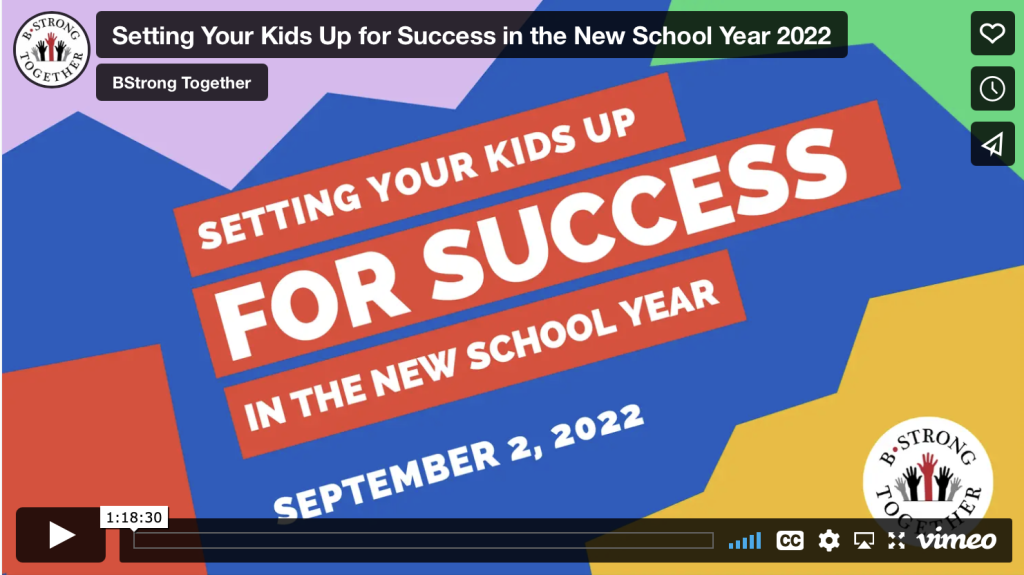
Tips for Easing Back-to-School Anxiety
by Kyle Kick
BStrong Together Executive Director
While some look toward the start of a new school year filled with excitement, for others, the start of the year brings increased levels of stress and anxiety.
All kids feel fearful or nervous at times. Sometimes, that fear, nervousness, and worry activates the body’s natural threat response system, turning fear and apprehension into anxiety. Even before the Covid-19 pandemic, rates of childhood anxiety were on the rise and anxiety disorders had become the most common psychiatric condition in youth. According to the American Academy of Pediatrics, 25%-30% of children and adolescents will develop an anxiety disorder during their lifetime.
(Click here to learn about the difference between feeling anxious and having an anxiety disorder.)
Parents, educators, and other caring adults play a crucial role in helping children and teens learn to manage anxiety. Here are some ways that you can help:
Encourage your children and teens to talk about their feelings. If you are supporting a younger child, help them to identify and name their feelings in order to better address them. Here is a great article to guide you in teaching younger children about their emotions.
Listen. Stay calm, soothing, and supportive. Let them know that they are safe and loved. A healthy, connected relationship will help to calm and reassure them so that they can work through their worries and fears.
Don’t say, ‘There is nothing to worry about.” Instead, try one of these 49 phrases to calm an anxious child.
Encourage them to take small steps forward rather than avoiding experiences that are scary or stressful. Learning how to change their response to stress and fear allows them to feel empowered and in control over their feelings in an effort to overcome their anxiety.
Let them know that they don’t have to be perfect. Adopt a growth mindset that values effort, perseverance, problem-solving, and the process of learning. Reframe failure as simply a part of the growth process.
Practice mindfulness and relaxation techniques including deep breathing, progressive muscle relaxation, and visualization. There are some wonderful apps to help children and teens to process their emotions and decrease anxiety including Smiling Mind, Calm, Headspace, or Dreamy Kid.
Schedule activities to reduce anxiety and stress. Time outdoors, exercise, time with family and friends, play, reading, and downtime can all help to reduce levels of stress and anxiety. It is also important to encourage good nutrition and establish healthy sleep habits as well. Check out our 40 Ways to Find Calm (en Español) or these additional tips for helping your child to manage stress.
Model coping skills and assist in problem solving. Help them to identify the problem that is causing the feelings, brainstorm possible solutions, come up with a plan, and execute the plan to take control over their anxiety and feel more empowered to handle their feelings in the future.
Practice reframing. Help your child to reframe their thoughts by asking them to identify their worrying thought, break down the thought, and reframe it in a positive way.
Create a “Calm-Down Kit” You might include music, stress ball, glitter jar, coloring books, fidget toys, clay, books, and stuffed animals. Create a calm-down checklist of coping skills your child has practiced to help them manage their feelings. Check out this list of 100 calm-down strategies and tools for other ideas.
Read age-appropriate books about managing emotions and anxiety including B is for Breathe or What to Do When You Worry Too Much. For older tweens or teens, try Coping Skills for Kids Workbook or Mindfulness for Teen Anxiety.
Find a trained therapist for support. For local resources, visit healthybarrington.org.
SOME ADDITIONAL BACK-TO-SCHOOL TIPS
- If your child is anxious about the start of school, be sure to take advantage of Meet-the-Teacher events and any opportunity to be in the school building before the first day.
- Encouraging them to reconnect with friends before the first day and making plans to carpool or sit together on the bus at the beginning of the year can also help with the transition.
- Resist the urge to review material from the previous years with you r child if they are nervous – this can create more stress and anxiety if they begin to focus on what they have forgotten rather than what they remember.
- Practicing your school routines for a few days reduces stress and creates greater predictability on the first day back.
- Continue to talk with your child about their concerns and help them to develop strategies to navigate their challenges and feelings. Empowering them with tools and available resources will help them to feel an increased sense of control and belief that they are capable of managing the world around them.
For other tips to start the school year off on the right foot, check out our Back to School Tips (en Espanol) handout.
Wishing that your last days of summer are filled with PDF (playtime, downtime, and family time), and that the start of the school year brings lots of smiles, new friends, and wonderful opportunities to learn and grow.

